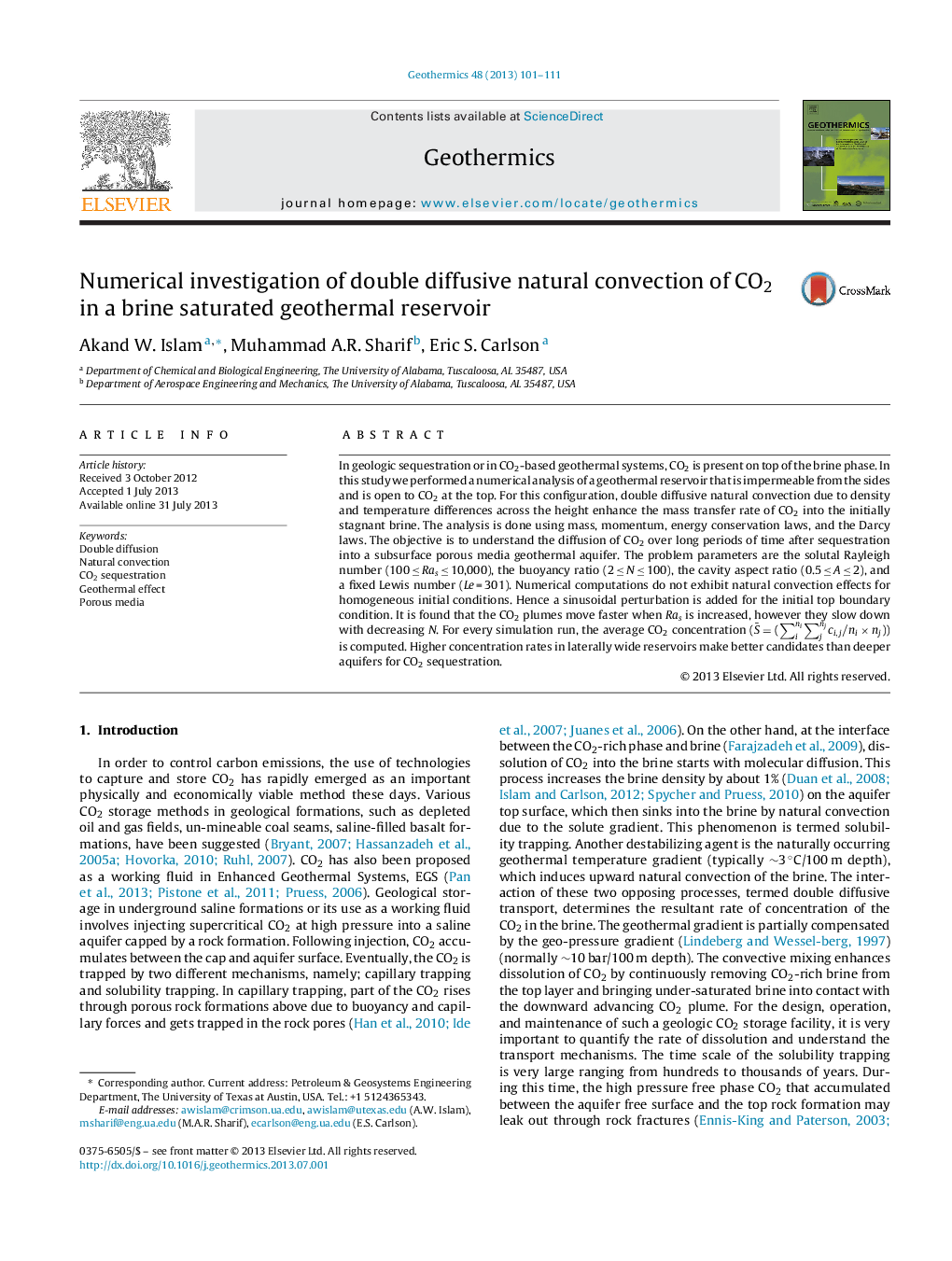| Article ID | Journal | Published Year | Pages | File Type |
|---|---|---|---|---|
| 1742429 | Geothermics | 2013 | 11 Pages |
•Double diffusive natural convection of carbon dioxide in brine saturated porous media is numerically investigated.•The objective is to understand the dissolution of carbon dioxide through natural convection process.•Geothermal effects and effects of reservoir aspect ratio are analyzed.
In geologic sequestration or in CO2-based geothermal systems, CO2 is present on top of the brine phase. In this study we performed a numerical analysis of a geothermal reservoir that is impermeable from the sides and is open to CO2 at the top. For this configuration, double diffusive natural convection due to density and temperature differences across the height enhance the mass transfer rate of CO2 into the initially stagnant brine. The analysis is done using mass, momentum, energy conservation laws, and the Darcy laws. The objective is to understand the diffusion of CO2 over long periods of time after sequestration into a subsurface porous media geothermal aquifer. The problem parameters are the solutal Rayleigh number (100 ≤ Ras ≤ 10,000), the buoyancy ratio (2 ≤ N ≤ 100), the cavity aspect ratio (0.5 ≤ A ≤ 2), and a fixed Lewis number (Le = 301). Numerical computations do not exhibit natural convection effects for homogeneous initial conditions. Hence a sinusoidal perturbation is added for the initial top boundary condition. It is found that the CO2 plumes move faster when Ras is increased, however they slow down with decreasing N. For every simulation run, the average CO2 concentration (S¯=(∑ini∑jnjci,j/ni×nj)) is computed. Higher concentration rates in laterally wide reservoirs make better candidates than deeper aquifers for CO2 sequestration.
